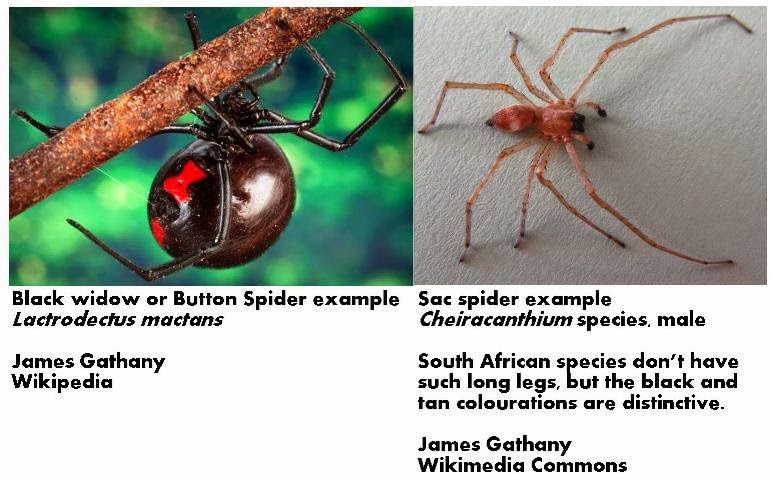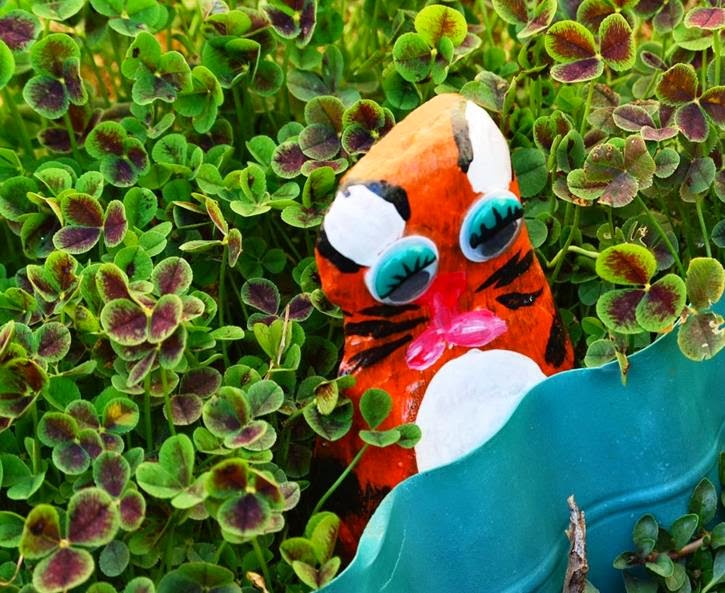Spiders
at a glance
Occupation:
|
Predator
|
Value
to Gardener:
|
5/5 - Pest Controller!
|
Danger
to Humans:
|
4/5 – Some are very poisonous
|
Availability:
|
5/5 – They’ll arrive in your garden
|
Quick Intro
Most people shriek at the sight of a spider and try their very best to stomp it out of existence. I believe that spiders have the worst reputation as terrible poisonous scary things (apparently 50% of women display symptoms of Arachnophobia!), but if you just let them be, they are super garden helpers who are the fundamental front-line in biological control and the battle against pests!
+Kurt+Stubers+Online+Library.jpg) |
| Arachnida Kunstformen der Natur 1900 Kurt Stubers Online Library |
Science Stuff
True spiders fall within the Araneae order amongst the other spider/scorpion look-alikes in the class Arachnida. Spiders are distinguished from the other orders by virtue of several characteristics, such as:
ü Spinnerets: Modified appendages at the rear of the abdomen that manipulate silk produced from the silk glands.
ü Enlarged pedipalps in males: These look like little “boxing gloves” and have evolved to transfer sperm to the female during courtship.
 |
| Spider anatomy |
Several families of spiders exist within Araneae. In general, the garden biological control agents are of the smaller type and likely not deadly poisonous, except Widows and Sac Spiders are very poisonous, so just steer clear of these.
 |
| Black widow and Sac spiders |
Habitat
Spiders occupy several niches within the environment and are found at various layers (for example, canopy habitats; where they wait in ambush or they are found running between the grasses and actively hunting prey).
The most common method of prey capture is through trapping, such as webs. Spider webs can be occupied singly (usually a large female, sometimes accompanied by a smaller male, such as orb web and tent spiders). Whereas others construct huge web structures that span entire forest clearings where multiple social spiders tend to the web and prey is shared, for example as with social community spiders. Ground dwelling spiders may burrow and ambush prey, such as baboon spiders or tarantulas, whilst wolf spiders run and actively hunt for prey.
For every ecological level in the garden, from the ground, the lower plants, shrubs and trees, there are spiders that occupy each of those levels. They also come in a variety of sizes, where small jumping spiders or spiderlings hunt small pests (such as aphids or whiteflies) and larger species can deal with larger prey, such as leaf hoppers and caterpillars. Therefore, spiders provide a full spectrum biological control on flying and crawling pests.
 |
| Hairy Field spider, web spinning species Neoscona species |
Diet
Spiders are considered to be predators, but as with most of nature’s creations there are exceptions. Some species’ spiderlings (these are small spider nymphs, during the second stage after hatching) feed nocturnally on nectar. Others may feed on dead insects (scavengers) and pollen.
Predatory spiders are considered generalists and unfortunately don’t differentiate between pest and beneficial insects. In general I find that spiders catch beneficials (bees or ladybugs) far less than pest species, such as aphids, flies, leaf hoppers and stink bugs.
 |
| Small jumping spiders eating an aphid (left), fly (top left) and one giving me the evil eye (bottom right). Ambush species Salticidae spp. |
 |
| Large jumping spider eating a leaf hopper Salticidae species |
Another Spider Tip
Providing places for spiders and maintaining them are very easy. You would want some strong sturdy plants, such as basil or dense clumping ones, such as Sterlitzea or Bougainvillea that provide plenty web space. Additionally, do not disturb these areas too often as this leads to a decrease in the overall spider population.
My main spider colonies consist of semi-social garbage line and hedgehog spiders that live in the Sterlitzea where they construct several layers of webbing. I don’t disturb them too often which means I have a permanent pest trap in my vegetable garden.
 |
| Garbage line spider Cyrtophora species |
 |
| Hedgehog spider Cyrtophora species |
Something Interesting: Spider venom biopesticide!
Most spider venoms are deadly to insects but not harmful to vertebrates. This initiated research into spider venom based pesticides as bee-safe alternatives to chemical insecticides (specifically neonicotinoids).
 |
| Lynx spider, active hunter Oxyopes heterophthalmus |
A particular protein found in the venom of the Australian Funnel Web Spider, Hadronyche versuta, targets the calcium-channel in the insect central nervous systems, causing paralysis. This protein is combined with another ‘carrier’ protein (the result is known as a fusion protein) to stabilise it and allows the toxin to be used as an oral pesticide. This potential biopesticide can be used against Lepidoptera (butterflies and moths), Coleoptera (beetles) and Diptera (flies). Researchers suggest further evaluation of this biopesticide on other beneficial Hymenoptera, such as bumblebees and parasitic wasps.
The development of biopesticides in conjunction with pollinator toxicity tests might provide more environmentally friendly alternatives to the conventional pesticide - and a more sustainable approach to farming!
For the original scientific paper (free and downloadable from):
 |
| False house button spider, female, egg sac and male Theridion species |
______________________________________________________________________________
Please share with fellow gardening enthusiasts via the various sharing buttons at the end of posts/pages! Else you can vote for posts through the Google reactions bar at the end of articles. To stay up to date I have provided several reader and social networking platforms with which to subscribe: Twitter, Pinterest, RSS Feed Reader or Email/Follow directly using the Blog Followers widget on the left hand side toolbar. Thank you for reading and please feel free to ask if questions arise - I appreciate comments and ideas too! 😆
_________________________________________________________________________________





+1.jpg)






